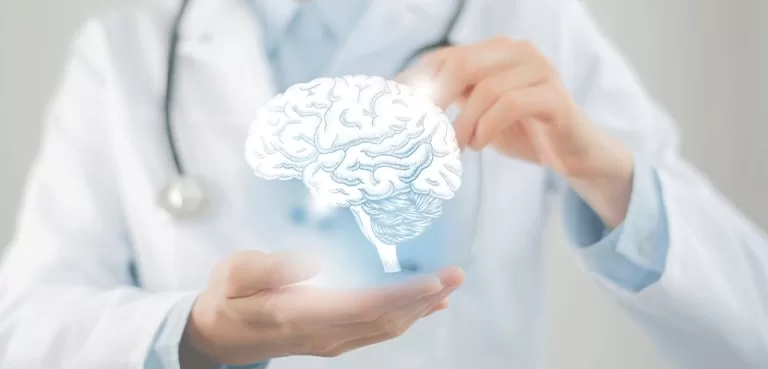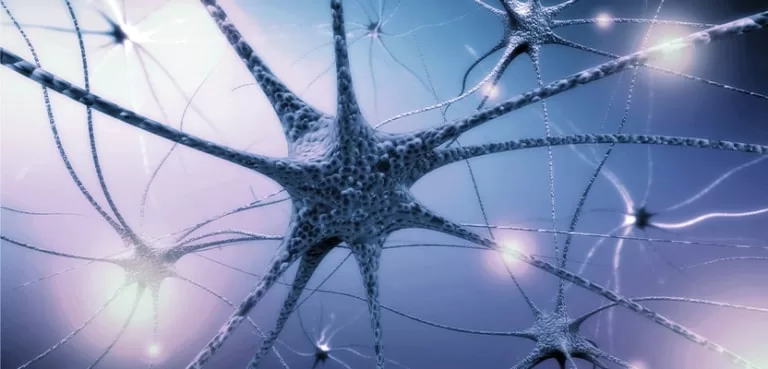+90 533 813 89 77
info@bookingforhealth.com
Facts about “Brain and Nervous System”
The brain is the central organ of the nervous system in all vertebrate and most invertebrate animals. It is located in the head and is responsible for controlling and coordinating body movements and sensations, regulating bodily functions, processing and interpreting information from the five senses, controlling and regulating emotions, controlling and regulating the endocrine system and hormone production, thinking, reasoning and problem-solving, forming and storing memories, controlling and regulating behavior and decision making.
It is the most complex organ in the body and is responsible for all of the body’s functions. It is made up of billions of nerve cells called neurons and supporting cells called glia, which work together to transmit, process, and analyze information.

What are Brain Diseases?
Some of these diseases may be inherited, while others may be caused by infections, injury, or environmental factors. Many brain diseases can be treated with medication, therapy, or surgery.
- Alzheimer’s Disease: a progressive brain disorder that affects memory, thinking, and behavior.
- Parkinson’s Disease: a degenerative disorder of the nervous system that affects movement.
- Multiple Sclerosis: a chronic, progressive disease that affects the central nervous system.
- Epilepsy: a disorder characterized by recurrent seizures.
- Stroke: a condition in which the blood supply to the brain is interrupted, leading to brain damage.
- Traumatic Brain Injury: injury to the brain caused by trauma such as a blow to the head.
- Brain Tumors: abnormal growths of cells in the brain that can be cancerous or noncancerous.
- Brain Infections: such as meningitis or encephalitis.
- Mental Illnesses: such as depression, anxiety, schizophrenia, and bipolar disorder.
What are the Functions of the Nervous System?
The nervous system is the body’s electrical wiring, composed of the brain, spinal cord, nerves, and sensory receptors. The nervous system can be divided into two main parts: the central nervous system (CNS) and the peripheral nervous system (PNS). The CNS, consisting of the brain and spinal cord, is responsible for processing and integrating information from the body and the environment. The PNS, consisting of nerves and sensory receptors, carries signals to the CNS and the rest of the body.
It has various tasks such as controlling and coordinating movement and sensations in the body, monitoring and responding to changes in the internal and external environment, transmitting and processing information from the five senses (sight, hearing, taste, smell, and touch), controlling and regulating the functions of other organ systems such as the endocrine and cardiovascular systems.
The nervous system facilitates communication between different parts and cells of the body. It controls and regulates behavior and decision-making. It controls and coordinates the body’s automatic functions, such as breathing and heartbeat. It also enables thinking, learning, remembering, and feeling emotions.

What are the Conditions and Disorders Affecting the Nervous System?
Many conditions and disorders can affect the nervous system. Examples include neurological disorders such as Alzheimer’s disease, Parkinson’s disease, multiple sclerosis, epilepsy, and stroke.
Traumatic brain injury and spinal cord injury, nerve and muscle diseases such as muscular dystrophy and myasthenia gravis, nervous system infections such as meningitis, encephalitis, and Lyme disease, brain, and spinal cord tumors, degenerative diseases such as Huntington’s disease and Amyotrophic lateral sclerosis (ALS), Other factors include congenital disorders such as cerebral palsy and spina bifida, mental illnesses such as depression, anxiety, schizophrenia and bipolar disorder, sleep disorders such as insomnia and sleep apnoea, headaches and neuromuscular disorders such as migraine, fibromyalgia, and chronic fatigue syndrome.
How Can the Nervous System and Brain Be Kept Healthy?
There are several ways to keep the nervous system and brain health. Regular physical activity helps to improve cardiovascular health, which in turn helps to keep the brain and nervous system healthy. Exercise also improves the flow of blood and oxygen to the brain, which can help to keep the brain cells healthy.
- Healthy Diet: Eating a diet rich in fruits, vegetables, and whole grains, and low in saturated and trans fats, can help to promote overall health and reduce the risk of chronic diseases that can affect the nervous system and brain.
- Mental Stimulation: Keeping the brain active through activities such as reading, puzzles, and games can help to keep the brain healthy and may reduce the risk of developing dementia.
- Sleep: Getting enough quality sleep is important for the overall health of the nervous system and brain. Sleep is important for the consolidation of memories and learning.
- Stress Management: Chronic stress can have negative effects on the brain and the nervous system, leading to depression, anxiety, and cognitive decline. Finding ways to manage stress through techniques such as meditation, yoga, or therapy can help to reduce its negative effects.
- Avoiding Harmful Substances: Excessive alcohol consumption and drug abuse can have damaging effects on the brain and nervous system, so it’s important to limit or avoid these substances.
Differences Between the Right and Left Hemispheres of the Brain: An Anatomical and Functional Perspective
The human brain, being the most complex and intriguing organ of the body, comprises two hemispheres – the right and the left – each serving distinct functions. Exploring the differences between the right and left hemispheres sheds light on the fundamental aspects of brain functionality and presents a captivating area of research.
1. Anatomical Structure and Control: The brain hemispheres are interconnected to control body movements. The right hemisphere governs the left side of the body, whereas the left hemisphere governs the right side. This coordination between hemispheres ensures the body’s symmetry and organization.
2. Functional Differences and Thinking Styles: The right hemisphere of the brain supports visual and spatial processing, facial recognition, and artistic abilities. On the other hand, the left hemisphere is renowned for its involvement in language and mathematical skills. The left hemisphere tends to be more analytical and logical, while the right hemisphere is associated with holistic and emotional thinking.
3. Language Proficiency and Speech: Language and speech abilities are predominantly directed by the left hemisphere. It houses language centers and plays a crucial role in expanding vocabulary, improving speaking skills, and enhancing comprehension.
4. Art and Creativity: The right hemisphere of the brain exhibits a strong connection with art, music, and creativity. Understanding and creating artistic works are considered attributes of the right hemisphere. Likewise, musical abilities and sense of rhythm are significant functions of the right hemisphere.
5. Facial Recognition and Emotional Perception: The right hemisphere plays a pivotal role in facial recognition and emotional perception. Its activity is closely associated with recognizing familiar individuals and interpreting facial expressions.
The disparities between the right and left hemispheres of the brain offer a fascinating perspective into the complexity and diversity of the human mind. This knowledge holds significance in raising awareness about brain health and studying the foundational basis of human behaviors.